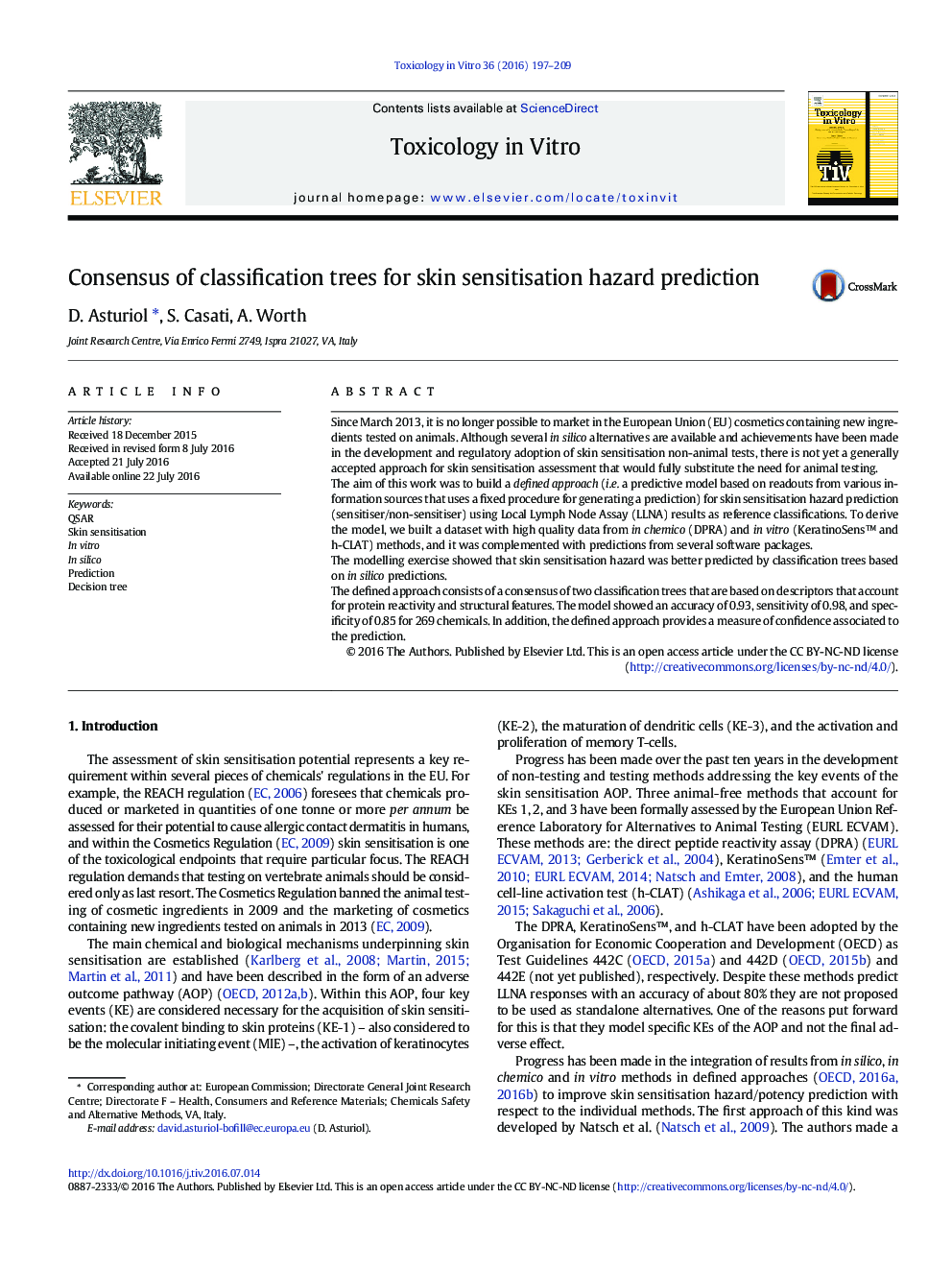| کد مقاله | کد نشریه | سال انتشار | مقاله انگلیسی | نسخه تمام متن |
|---|---|---|---|---|
| 5861169 | 1562709 | 2016 | 13 صفحه PDF | دانلود رایگان |
- A consensus of classification trees to predict skin sensitisation hazard
- Database containing LLNA, DPRA, KeratinoSensâ¢, h-CLAT, and in silico predictions
- In silico descriptors showed the highest accuracy in predicting LLNA hazard
- The model predicts LLNA classification with an accuracy of 0.93 for 269 chemicals
- The model provides a measure of confidence associated to the prediction
Since March 2013, it is no longer possible to market in the European Union (EU) cosmetics containing new ingredients tested on animals. Although several in silico alternatives are available and achievements have been made in the development and regulatory adoption of skin sensitisation non-animal tests, there is not yet a generally accepted approach for skin sensitisation assessment that would fully substitute the need for animal testing.The aim of this work was to build a defined approach (i.e. a predictive model based on readouts from various information sources that uses a fixed procedure for generating a prediction) for skin sensitisation hazard prediction (sensitiser/non-sensitiser) using Local Lymph Node Assay (LLNA) results as reference classifications. To derive the model, we built a dataset with high quality data from in chemico (DPRA) and in vitro (KeratinoSens⢠and h-CLAT) methods, and it was complemented with predictions from several software packages.The modelling exercise showed that skin sensitisation hazard was better predicted by classification trees based on in silico predictions.The defined approach consists of a consensus of two classification trees that are based on descriptors that account for protein reactivity and structural features. The model showed an accuracy of 0.93, sensitivity of 0.98, and specificity of 0.85 for 269 chemicals. In addition, the defined approach provides a measure of confidence associated to the prediction.
187
Journal: Toxicology in Vitro - Volume 36, October 2016, Pages 197-209
